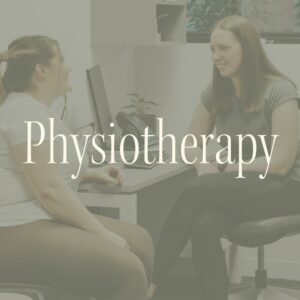Menopause is the time following our last period or menstural cycle. Menopause comes from the Greek words “menos” (which means month) and “pause” (which means to cease) which form the word “menopause” meaning the “stopping of the monthly” (period). There are three main stages of menopause : perimenopause, menopause and postmenopause.
Menopause can happen typically anytime between the ages of 40-60, with the average age in Australia being 51-52 years. Menopause can sometimes occur earlier due to many reasons including surgery, chronic illness and cancer treatments.
During all stages of menopause we see a change in hormonal levels in our body. Hormones are chemicals made in our body, which send messages through our bloodstream. The hormones specifically relevant during menopause are oestrogen and progesterone.
These menopausal hormonal changes can have an affect on our whole body including the cardiovascular system and central nervous system. Hormonal changes begin in the perimenopausal phase and can last from months to years. If menopause begins earlier due to surgery or cancer treatment, we can see a sudden hormonal drop which can make symptoms more severe.
The effect of menopause can be highly variable for everyone, with a small group of people experiencing minimum symptoms. However, research indicates that 80% or people will experience menopausal symptoms, with 25% describing these symptoms as severe (Currie et al., 2021).
Some common menopausal symptoms can include:
- Loss of bone and muscle mass
- Reduced insulin sensitivity
- Poor sleep
- Hot flushes
- Poor cognition/ “brain fog”
- Fat mass gain
- Fatigue
- Decreased libido
- Increased risk of osteoporosis, diabetes and coronary artery disease
Menopause and Exercise
Exercise can help manage some of the negative side-effects of menopause and optimise our general health and wellbeing. Exercise is now becoming the “go-to” treatment as a first-line medical intervention for menopausal symptoms. HRT (hormone replacement therapy) can help manage symptoms medically and studies have now shown that adding exercise therapy to HRT can actually improve the effectiveness of HRT (Stojanovska et al., 2014).
What type of exercise is best?
General exercise has been proven to help improve mental clarity, improve our sleep and improve insulin sensitivity. Exercise has been shown to release “feel good hormones” (such as serotonin and dopamine) which help tackle low mood, depression and anxiety. General exercise can help stimulate these benefits so I recommend that you go with the exercise that you enjoy (Stojanovska et al., 2014).
However, more specifically to minimise the effect menopause has on our muscles and bones; strength or resistance training trumps as the preferred exercise (Yeh et al., 2018). Resistance training can include Pilates or weight-training/ resistance-training in the gym.
Resistance training helps increase our muscle strength and help maintain bone strength. In fact, resistance training has become part of the gold standard medically recommended intervention for osteoporosis or osteopenia, which become particualarly prevalent during menopause (Yeh et al., 2018)
Recent research has shown that including strength training twice per week nearly halved (44%) hot flushes for menopausal people compared to a sedentary group (Berin et al., 2016). The same study showed that low-intensity exercise (walking) did also have a positive effect but not to the same extent as the effect of strength training.
If you are interested in finding out more, feel free to chat to one of our physiotherapists, who have specific training in this area and work collaboratively with local women`s health medical practitioners working in this area. Our BalanceNorth physiotherapists can help guide you through a holistic management plan to support you through menopause.
References
- Berin, E., Hammar, M. L., Lindblom, H., Lindh-Åstrand, L., & Holm, A. C. E. S. (2016). Resistance training for hot flushes in postmenopausal women: Randomized controlled trial protocol. Maturitas, 85, 96-103.
- Currie, H., Abernethy, K., & Hamoda, H. (2021). Vision for menopause care in the UK. Post Reproductive Health, 27(1), 10-18.
- Holloway, D. (2022). The menopause: symptoms, treatments and implications for women’s health and well-being. Primary Health Care, 32(1).
- Stojanovska, L., Apostolopoulos, V., Polman, R., & Borkoles, E. (2014). To exercise, or, not to exercise, during menopause and beyond. Maturitas, 77(4), 318-323.
- Yeh, M. L., Liao, R. W., Hsu, C. C., Chung, Y. C., & Lin, J. G. (2018). Exercises improve body composition, cardiovascular risk factors and bone mineral density for menopausal women: A systematic review and meta-analysis of randomized controlled trials. Applied Nursing Research, 40, 90-98.



